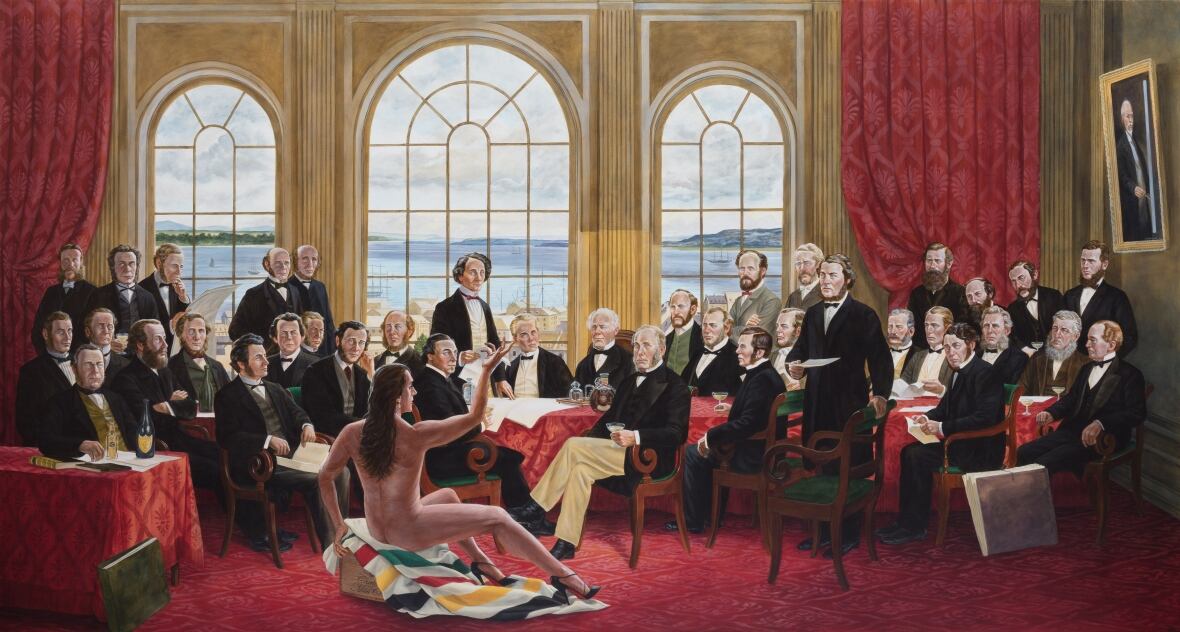Kent Monkman puts the Indigenous experience into art history
When artist Kent Monkman was approached to do a project tied to the 150th anniversary of Canada, he jumped at the chance.
"I wanted to create a body of work that would be critical of this last 150 years of Canada. Something to counter the celebrations that will be happening this year," he explained. "I wanted people to reflect on what have the last 150 years meant to Indigenous people."

Monkman's latest exhibit, Shame and Prejudice: A Story of Resilience, runs until March 4th at the University of Toronto Art Centre.

The exhibit features a mix of original work, as well as dozens of museum objects, artifacts, paintings and drawings he curated from museum collections across the country.
"Because I believe in the power of painting ... I wanted to make paintings that could authorize these important events into Canadian history so that they will exist as monuments, to mark the legacy of what the last 150 years have meant to Canada."
Click the Listen button above to hear Kent Monkman's full conversation with Rosanna Deerchild.
